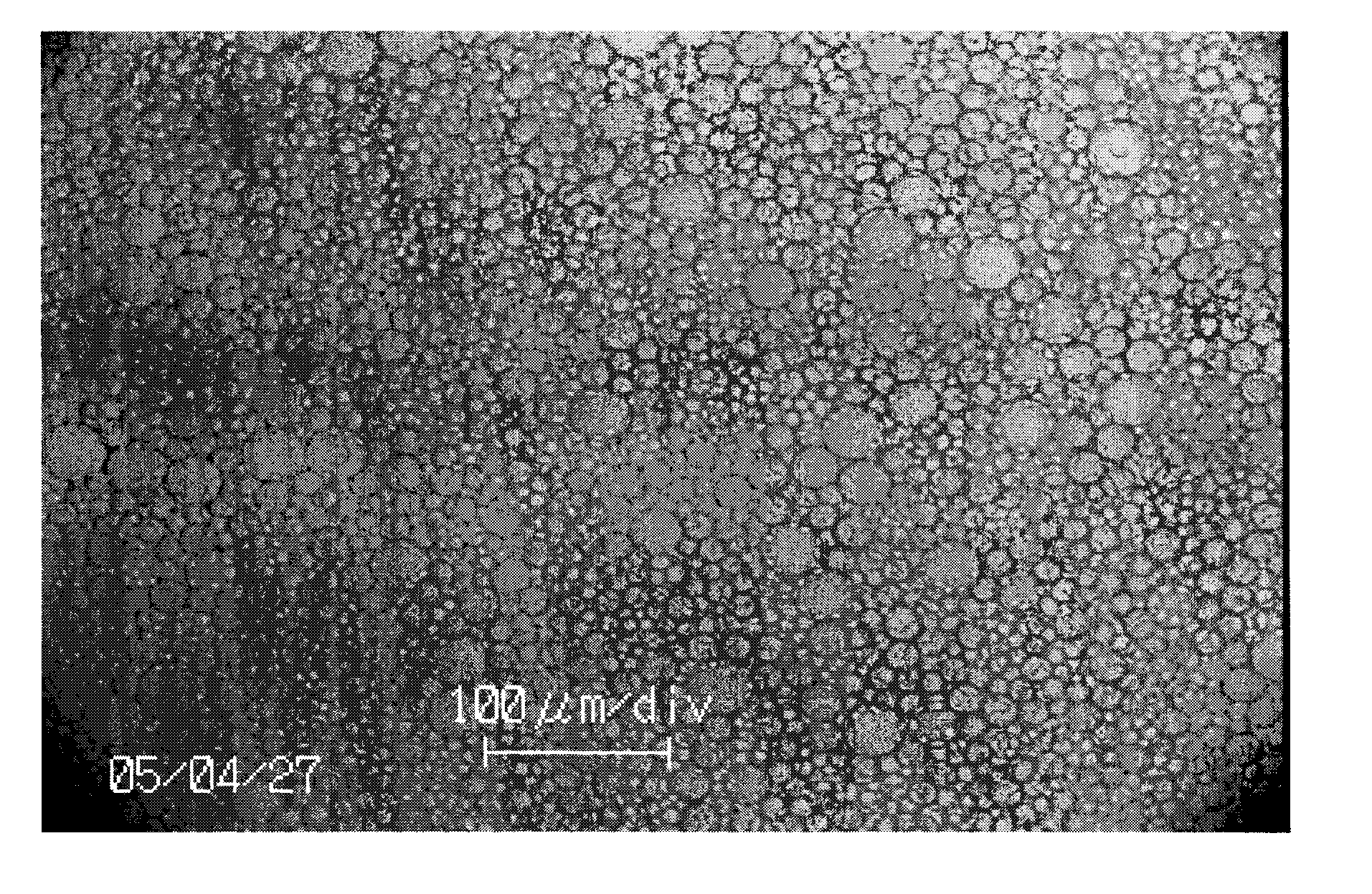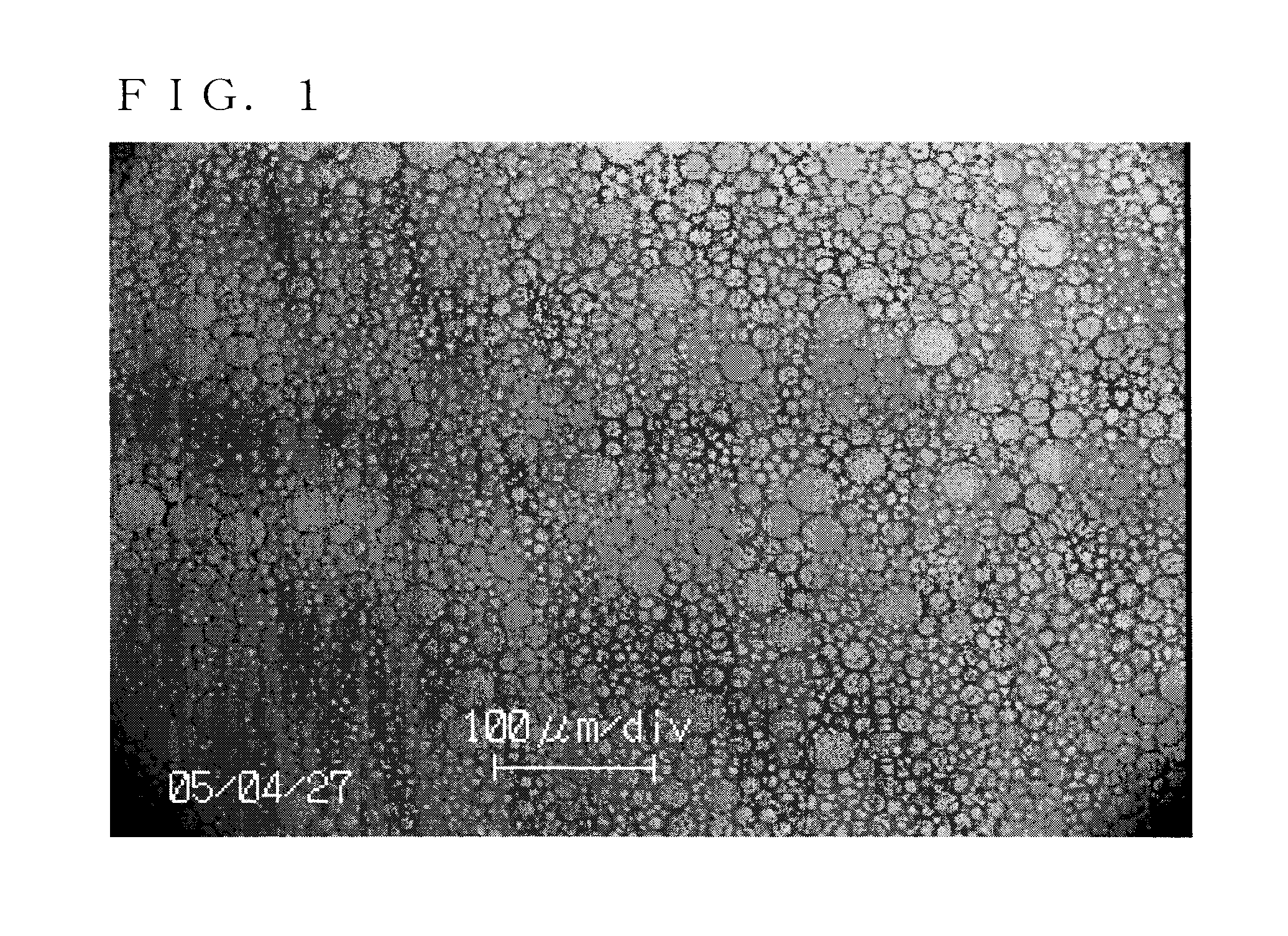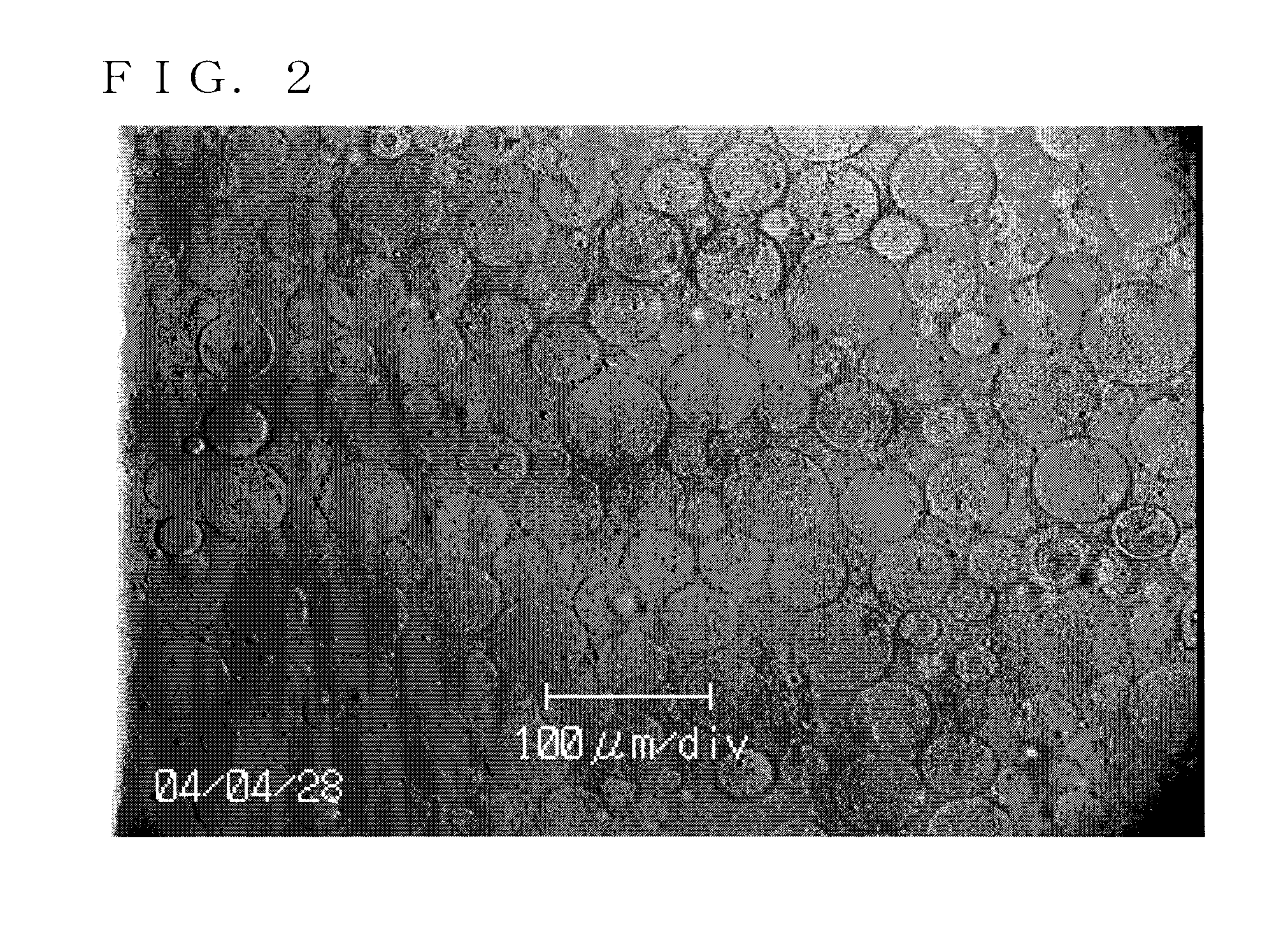Process for the production of polymer microparticles
- Summary
- Abstract
- Description
- Claims
- Application Information
AI Technical Summary
Benefits of technology
Problems solved by technology
Method used
Image
Examples
production example 1
Production of Macromonomer Compositions UM-1 and UM-1HP
[0097]The temperature of an oil jacket of a 1,000-mL pressuring stirring vessel type reactor with the oil jacket was kept at 240° C.
[0098]A monomer mixture liquid prepared in proportions of 75.0 parts of lauryl methacrylate (hereinafter referred to as “LMA”) and 25.0 parts of acrylic acid (hereinafter referred to as “AA”) as a monomer, 10.0 parts of methyl ethyl ketone (hereinafter referred to as “MEK”) as a polymerization solvent, and 0.45 part of di-tert-butyl peroxide (hereinafter referred to as “DTBP”) as a polymerization initiator was charged into a tank for starting material.
[0099]Feed of the monomer mixture liquid in the tank for starting material to a reactor was started, and the feed of the monomer mixture liquid and extraction of a reaction mixture liquid were carried out so that the weight of the contents within the reactor would be 580 g and the average residence time would be 12 minutes. The temperature in the react...
example 1
Production of Polymer Microparticles TF-1
[0105]For a polymerization reaction was used a reactor having a capacity of 3 liters, equipped with a stirring mechanism consisting of an anchor type stirring blade and further equipped with a thermometer, a reflux condenser, and a nitrogen introduction tube. The reactor was charged with 9.3 parts (2.8 parts in terms of pure content of UM-1) of the UM-1HP produced in Production Example 1 and 6.0 parts of sorbitan monooleate (“REODOL AO-10” manufactured by KAO Corp.) as a dispersion stabilizer and 158.0 parts of n-heptane as a polymerization solvent, which were stirred and mixed while the solution was kept at a temperature of 40° C., so that an oil phase was prepared. The oil phase was stirred at 40° C. for 30 minutes and then was cooled to 20° C.
[0106]On the other hand, into another container were charged 100.0 parts of AA, 7.82 parts (equivalent to 1.74 mol % relative to a monofunctional monomer) of polyethylene glycol diacrylate (“ARONIX M-...
example 2
Production of Polymer Microparticles TF-2
[0114]Production was conducted in the same manner as that in Example 1, except for adding p-methoxyphenol as a hydrophilic polymerization inhibitor to the monomer mixed liquid. The results are shown in Table 1.
PUM
| Property | Measurement | Unit |
|---|---|---|
| Length | aaaaa | aaaaa |
| Length | aaaaa | aaaaa |
| Fraction | aaaaa | aaaaa |
Abstract
Description
Claims
Application Information
 Login to View More
Login to View More - R&D
- Intellectual Property
- Life Sciences
- Materials
- Tech Scout
- Unparalleled Data Quality
- Higher Quality Content
- 60% Fewer Hallucinations
Browse by: Latest US Patents, China's latest patents, Technical Efficacy Thesaurus, Application Domain, Technology Topic, Popular Technical Reports.
© 2025 PatSnap. All rights reserved.Legal|Privacy policy|Modern Slavery Act Transparency Statement|Sitemap|About US| Contact US: help@patsnap.com



